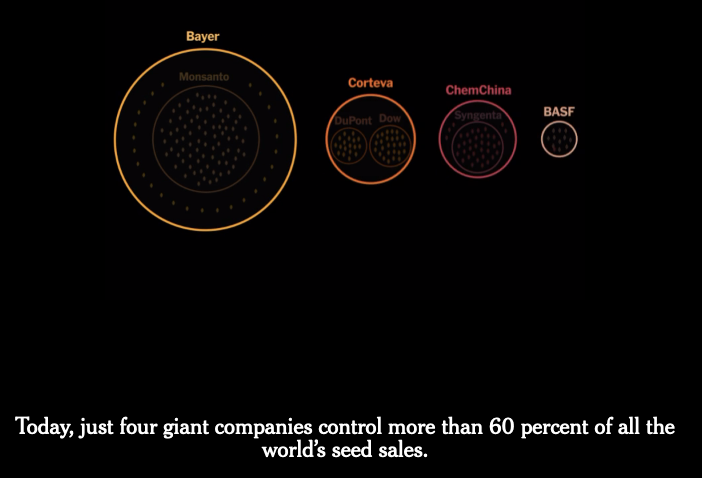. . .
It is as if the seed is a toy that comes with a mile-long list of component parts you’re required to purchase to make it function properly.
We think that the behemoths of agribusiness known as Big Food control the food system from up high — distribution, processing and the marketplace muscling everything into position. But really it is the seed that determines the system, not the other way around.
The seeds in my palm optimized the farm for large-scale machinery and chemical regimens; they reduced the need for labor; they elbowed out the competition (formally known as biodiversity). In other words, seeds are a blueprint for how we eat.
We should be alarmed by the current architects.
Just 50 years ago, some 1,000 small and family-owned seed companies were producing and distributing seeds in the United States; by 2009, there were fewer than 100. Thanks to a series of mergers and acquisitions over the last few years, four multinational agrochemical firms — Corteva, ChemChina, Bayer and BASF — now control over 60 percent of global seed sales.




